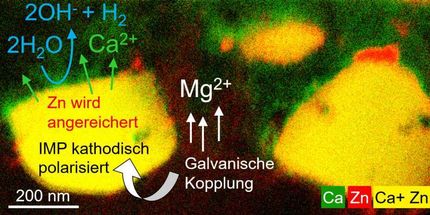X-ray mapping enhances potential of lightweight magnesium
A world-first study led by Monash University has discovered a technique and phenomenon that can be used for creating stronger, lightweight magnesium alloys that could improve structural integrity in the automobile and aerospace industries.
Published in Nature Communications, researchers from Monash University, CSIRO and Chongqing University discovered a pattern of alloying element segregation in twin boundaries by using atomic-resolution X-ray mapping at much lower electron voltage.
Engineers are constantly seeking strong, lightweight materials for use in cars, planes and in high-speed vehicles to improve fuel efficiency, aerodynamics, speed and weight load.
The finding is significant, as the deformation of lightweight magnesium during thermomechanical processes and applications prevents those alloys from being used more widely in place of steel. It also has implications for other light alloys such as aluminium and titanium.
"Lightweight magnesium has tremendous potential for energy-efficient and environmentally-friendly applications. But the segregation in these materials is prone to electron beam damage," lead author Professor Jian-Feng Nie, from Monash University's Department of Materials Science and Engineering, said.
"The electron beam damage is most severe when segregated solute atoms become a single atomic column. This impacts the formability, deformation behaviour and tension-compression strength of wrought magnesium products.
"We demonstrated that it's possible to solve this difficulty by using atomic-resolution X-ray mapping at a much lower accelerating voltage of electrons [120kV] instead of 300kV, which is commonly used.
"We further discovered that the new segregation pattern increases the boundary pinning effect by more than 30 times, and switches the migration mechanism of the twin boundary from the commonly accepted mode to a new one."
The researchers used a magnesium alloy comprising neodymium and silver as part of their study. This alloy contains superior mechanical properties at both ambient and elevated temperatures.
They found significant improvements in shear stress, by 33 times, and elastic strain limit occurred when the twin boundary was populated with neodymium and silver.
The increased charge density between silver and neodymium with the magnesium indicated a stronger bond and strengthening of the twin. As force is applied, the magnesium is pushed towards the neodymium and away from the silver - creating a stronger, lightweight alloy.
"Our work demonstrates that the atomic-scale analysis of the structure and chemistry of solute segregation in metallic alloys with complex compositions is now possible," Professor Nie said.
Most read news
Other news from the department science

Get the analytics and lab tech industry in your inbox
By submitting this form you agree that LUMITOS AG will send you the newsletter(s) selected above by email. Your data will not be passed on to third parties. Your data will be stored and processed in accordance with our data protection regulations. LUMITOS may contact you by email for the purpose of advertising or market and opinion surveys. You can revoke your consent at any time without giving reasons to LUMITOS AG, Ernst-Augustin-Str. 2, 12489 Berlin, Germany or by e-mail at revoke@lumitos.com with effect for the future. In addition, each email contains a link to unsubscribe from the corresponding newsletter.






















































